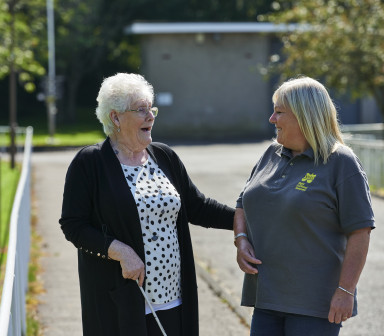Sight Scotland Veterans Senior Rehabilitation Officer, Fiona McCormick, shares five key things to know about communicating with someone with a visual impairment.
If in doubt, ask
If you’re unsure if someone has a visual impairment, just ask if they need any help and how you can be of assistance. It's not always obvious and if the person isn't carrying a cane to indicate visual impairment, it can be very hard to identify.
Identify yourself
Always announce when you enter/leave a room and identify yourself along with any others with you to a person with sight loss. Say what you are doing -"It's me, Fiona, just popping in to grab a pen" for example.
Speak directly to them, not to their sighted companion
Talk directly and distinctly to the person with a visual impairment, not to their sighted companion. It's also important not to raise your voice unless they also have a hearing impairment.
Answer questions and be specific and descriptive in your responses. Don’t be afraid to ask questions if you’re unsure of anything. And RELAX – don’t be embarrassed by using common phrases like “see you later.”
Let the person know where you are
Most people who have a visual impairment have some useable vision - in this instance, stand where you can be seen, in good lighting, and avoid talking from behind them.
If the person you're speaking to has no vision at all, let them know where you are.
Assistance isn't always required - or welcomed.
If you offer assistance to a person with a visual impairment, wait until it’s accepted. Listen or ask for instructions on how best to assist the person. They may just be trying to work out where they are and may not want help, but don’t be scared to ask and don’t be offended if declined.

